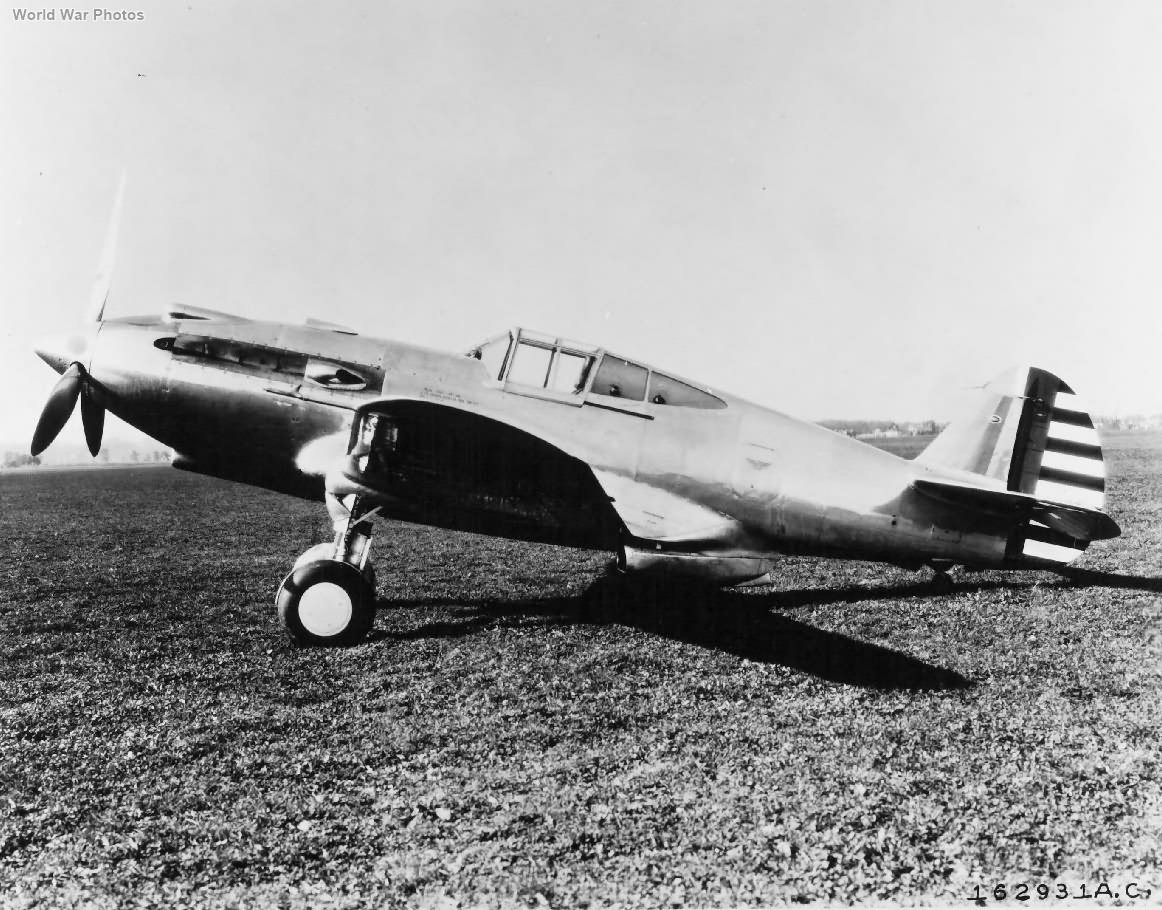The XP-40 had its first flight on October 14, 1938, with test pilot Edward Elite at the helm. The aircraft was armed with two 0.50-inch machine guns mounted on the upper fuselage, synchronized to fire through the propeller arc, which was typical armament for US pursuit planes at the time. Additionally, wing racks could be installed to carry six 20-pound bombs for ground-attack missions.
Initial flight tests were underwhelming, with the aircraft’s top speed barely reaching 300 mph. Originally, the coolant radiator was positioned under the fuselage behind the wing. However, as testing continued and efforts were made to enhance the aircraft’s speed, the radiator was progressively moved forward until it was eventually placed under the extreme nose. The radiator intake was also redesigned to incorporate an oil cooler and a pair of radiators for the ethylene/glycol engine coolant. Initially, the XP-40 featured a single exhaust port on each side of the fuselage, but this was later modified to six separate exhaust ports on each side in its final form. The XP-40 initially used the P-36’s main wheel fairing panels, which covered the main wheels when retracted into the wing wheel wells. However, these were later replaced with two small doors that closed over the wheel struts upon retraction.
